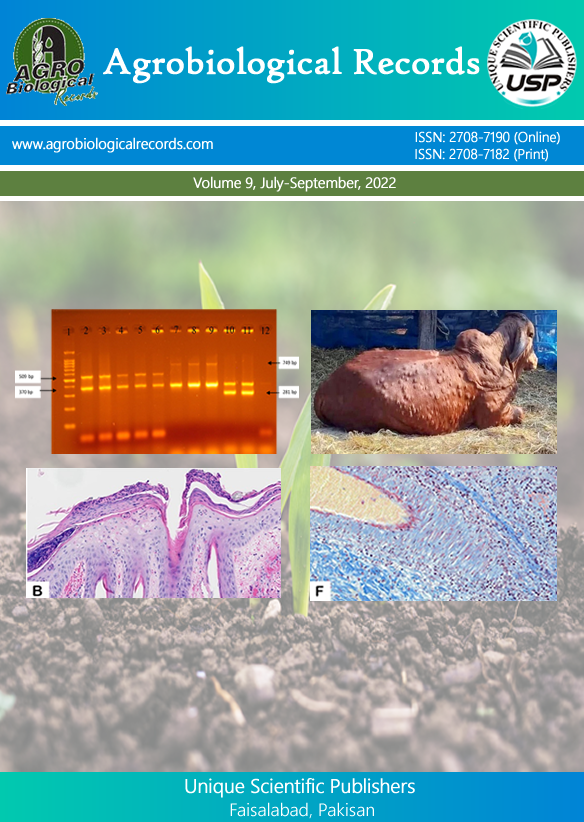
Muhammad Mohsin*§,1,2, Sara Omer Swar3, Muhammad Imran4, Wahad Ali5, Muhammad Daud Sultan5, Rida Asrar5, Rao Zahid Abbas4, Muhammad Tahir Aleem§,6, Liliana Aguilar-Marcelino7, Ammara Aslam5, Abdullah Shahab5, Muhammad Ahtesham Ahsan5, Akram Ismael Shehata2,1,8, Mayada Alhoshy2,1,8, Yusuf Jibril Habib2,1,9, Muhammad Haris Raza Farhan5 and Guangwen Yin*,1
1 Engineering Laboratory of Animal Pharmaceuticals and College of Animal Sciences (College of Bee Science), Fujian Agriculture and Forestry University, Fuzhou, Fujian Province, China 2 College of Life Science, Fujian Agriculture and Forestry University, Fuzhou, Fujian Province, 350002, China 3 Department of Food Technology, College of Agricultural Engineering Sciences, Salahaddin University, Kurdistan, Iraq 4 Department of Parasitology, University of Agriculture, Faisalabad, Pakistan 5 Faculty of Veterinary Science, University of Agriculture, Faisalabad-38000, Pakistan 6 MOE Joint International Research Laboratory of Animal Health and Food Safety, College of Veterinary Medicine, Nanjing Agricultural University, 210095 Nanjing, China 7 Centro Nacional de Investigacion, Discliplinaria en Salud Animal e Inocuidad, INIFAP, Km 11 Carretera Federal Cuernavaca, No. 8534, Col. Progreso, Jiutepec, Morelos, C.P. 62550, Mexico 8 Department of Animal and Fish Production, Faculty of Agriculture (Saba Basha), Alexandria University, Alexandria, Egypt 9 Faculty of Applied Science, Medical Analysis Department, Tishk International University, Iraq; §These authors contributed equally.
*Corresponding author: onlymohsindvm@gmail.com (MM); yinguangwen000@sina.com (GY)
Bovine mastitis is an inflammatory response mainly caused by bacteria with substantial economic losses to the world dairy industry and brings issues like food safety for humans. The long-term presence of inflammation of mammary tissue causes chronic mastitis that leads to udder fibrosis. Udder fibrosis is a major problem for dairy cattle, which drops the milk yield. Mastitis at an early stage of lactation results in long-term production loss. In contrast, subclinical mastitis causes an increased risk of getting clinical mastitis in subsequent lactation and premature culling of animals. Risk factors including husbandry practices, milking methods, temperature fluctuation, and irrational use of antibiotics are significantly associated with mastitis. Consequently, the early detection of mastitis is crucial, considering the difficulty of detecting sub-clinical mastitis. So, we can use diagnostic tools such as different chemical tests, ultrasonography, teat endoscopy, and physical examination of the fibrosed udder. It is possible to treat mastitis in early-stage; however, it becomes difficult to treat once the fibrosis occurs. The current manuscript covers a detailed review of published data on mastitis, udder fibrosis causes, manageable factors, and other issues that merit further investigation.